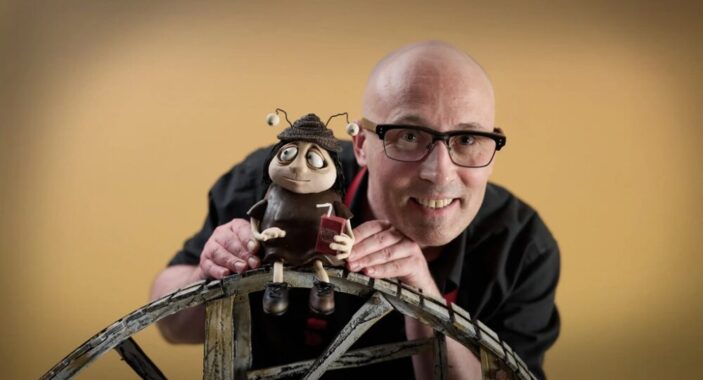
Grace Pudel is a lonely misfit with an affinity for collecting ornamental snails and an intense love for books. At a young age, when Grace is separated from her fire-breathing twin brother Gilbert, she falls into a spiral of anxiety and angst. Despite a continued series of hardships, inspiration and hope emerge when she strikes up an enduring friendship with an elderly eccentric woman named Pinky, who is full of grit and lust for life.
From Academy Award-winning animation writer and director Adam Elliot, Memoir of a Snail is a poignant, heartfelt and hilarious chronicle of the life of an outsider finding her confidence and silver linings amongst the clutter of everyday life.
As the film arrives in Australian theatres, Peter Gray spoke with Adam, and after they bonded over the joy of still owning physical media in an environment of streaming services, they touched on his own relationship with stop-motion, the parallels of lingering memories and the pace of a snail, and why he knew Sarah Snook was the perfect actor to voice Grace.
With AI becoming more and more prevalent in the industry, how are you finding your own personal relationship with this distinct type of animation?
I’ve often said the digital technology has actually liberated us. It hasn’t destroyed us. We’ve embraced the digital technology. All our cameras are Canon Digital SLR cameras. All our lights are LED, and that’s great cause they don’t heat up the room. The globes don’t blow every 10 minutes. We use software that now helps us (too), (so) we can delete frames and move frames around. There’s all these wonderful digital tools that have really helped us. It’s sped things up to a degree. I wouldn’t say a lot, but it’s also just the resolution. Now we can see what we’re doing when celluloid died. That really was the beginning of wonderful things for us, because we have to animate blind. We didn’t know what we were doing until we got our rushed back, and that was very expensive. So the quality of animation has gotten better. You look at Laika and the films they make, like Coraline, and they’re all so incredibly fluid and slick, and that’s because of the digital technology. My only criticism is that I think they’re too slick. They’re too refined. And a lot of people don’t even know that they’re stop-motion. And that’s because they don’t have the clunkiness that my films have.
Have you ever been approached, or tempted, to make your films with a more digital input? Or this form of traditional stop-motion is the format you want to stay with?
Yeah, there actually was this guy, and I can’t remember the name of the company in America, but he approached us and did some demo work. He got one of my puppets and he 3D scanned it, put it into software, and it started animating. It looked like stop-motion, and he said he could make my whole film like this. I wouldn’t have to build all those sets. I said, “Then it’s just a synthetic version of a stop-motion film.” It missed the point that the audience will know. And even if they don’t know, they’ll know when the credits roll and they’ll see all of these visual effects artists. He was so horribly disappointed and offended, and we told him we wanted to do it the old fashioned way. And I’m so glad he didn’t talk us into it.
It’s very tempting, mind you. For example, the fire and smoke in the films, we could have done that digitally. There’s some wonderful plugins that we could have used, but my animation supervisor is even more of a purist than I am, and he wanted to do it the hard, slow, difficult way. I’m glad we stuck to our guns, and the audience really appreciate it (too). It’s funny every time I get up and tell the audience that the tears are sex lube and the fire is cellophane you can feel the appreciation level go up a notch.
Talking about how slow the process can be, it feels like a perfect segue for a movie that revolves around a snail. In choosing a snail, was that, in any way, working as a parallel to the lingering of memories and the slowness of time?
Great question. No one’s actually asked that yet. I’ve been waiting for this question. It’s such a great parallel, because even the production company is called Snail Pace Films, which is just a working title, and that company dissolves once the film’s finished, but I love that Aesop’s fable of the Tortoise and the Hare. You know, slow and steady wins the race. I think because stop-motion is such a process, you do get the time to really solve problems with a lot of thought and care. Unlike live action movies, which happen in about 8 weeks on average, you’re being creative with a gun to your head. I mean, we still have a lot of pressure, and there’s only so much money we get, but you really do have time to think things through.
Our storyboarding is incredibly detailed compared to a live action film too. I mean so many live action films don’t even have storyboards. It’s very prescribed and planned. Before I chose snails, it was going to be a ladybird, but I thought they were too cute. There’s something about snail always retracting into their shells. And that’s what (our character) Grace is continually doing, retracting from the world and her pain and trauma. I also love the swirl as a symbol of life going full circle, which is what happens to Grace. She comes back to her beginning point. They’re such alien creatures. But they are always moving forward. And that’s a wonderful link to the quote, “Life can only be understood backwards.”

Did it shift anything for you in terms of your own perspective of life?
I think that now I’m in my early 50s, I’m much more, you know, I try and smell the roses. I remember when I made Mary and Max, I really didn’t have time to enjoy the process. It was my first feature film (and) I was terrified the whole time. I was anxious. I couldn’t sleep. Whereas with this film, I had very low expectations for it. Our budget was lower than Mary and Max, and I thought it doesn’t matter if people hate the film or it doesn’t work as well, at least I’m going to try and enjoy the making of it. So I really tried as much as I could, particularly with the production design. I spent the whole of COVID just drawing every prop set and character. So this film had a lot less money and a lot more prep.
Your films always have so much humour and poignancy in an equal balance. Do you find one informs the other? Does one ever come through stronger than the other as you’re mapping the story out?
I just get all the ingredients I want in the film, and I try and work out a way to string them together and then work out a chronology where it’s shifting between the light and the dark. I use the word positive-negative quite a bit too. It’s going from one extreme to another, and it’s just getting that contrast. I suppose trusting your instincts (too) and knowing when to stop having the darkness and revert to the comedy. I have a great editor too, and he knows when I’ve gone too far. He knows when a joke isn’t working, or is falling flat or is too crass. It’s really good to surround yourself with “No” people. I was talking to someone about Megalopolis and how it’s obvious (Francis Ford Coppola) didn’t have many “No” people around him.
Well you had people that didn’t say “No” when it comes to this incredible voice cast. When you’re writing a character, are you hearing any particular voice in your head as to how they sound? Sarah Snook is so perfect in this. How did she, and the entirety of this ensemble, come about for you?
We always try and find actors who have international profiles, because it does make financing easier. But with Grace, yeah Sarah was just always on my list. We certainly considered all the other Australian actors. (Nicole) Kidman and (Cate) Blanchett, but none of them just ticked the boxed like Sarah did. She has this beautiful shyness and quietness and vulnerability to her. I even went back and watched some of her earlier films, like These Final Hours, and, yeah, I just couldn’t put my finger on it but I just knew that if we could get her, she would work.
Memoir of a Snail is now screening in Australian theatres.
